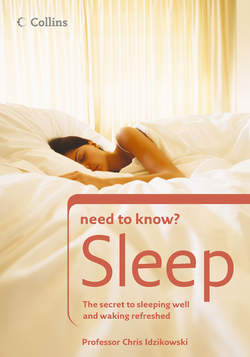Читать книгу Sleep: The secret to sleeping well and waking refreshed - Prof. Idzikowski Chris - Страница 20
The brain’s metronome
ОглавлениеThe suprachiasmatic nucleus (SCN), is the brain’s master biological clock, or metronome. It helps to synchronize sleep with the circadian rhythm, as well as regulating many of the bodily functions that affect sleep, such as hormonal secretion and body temperature. Made up of about 20,000 nerve cells, the SCN is located in the brain’s hypothalamus, just behind the eyes, and is immensely important; if it is destroyed, 24-hour rhythms break down. It keeps time with daylight and is believed to work particularly closely with the wakefulness centre of the brain. Scientists also believe it ‘instructs’ the pineal gland to release melatonin, the hormone that signals the onset of darkness.
In 2002, a group of scientists discovered that the SCN is directly connected to a receptor in the retina sensitive to blue light (light from the sky), which enables the brain to identify whether it is light or dark. In blind people, who have damaged retinas, the SCN does not synchronize with daylight and so their ability to sleep is affected.
